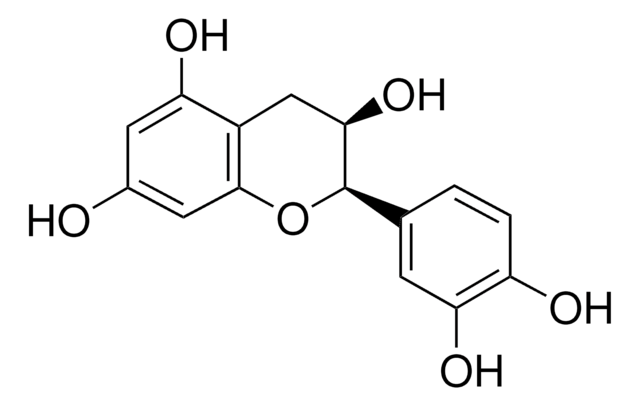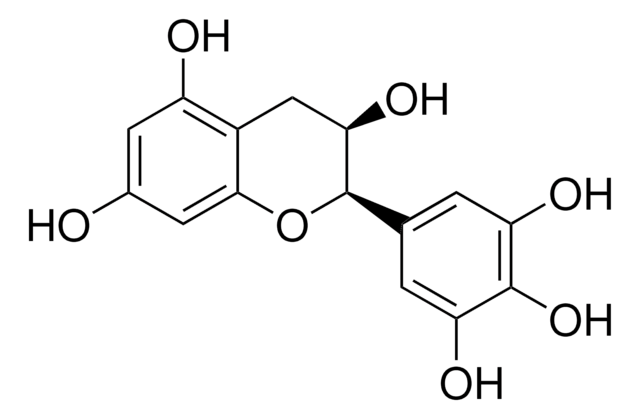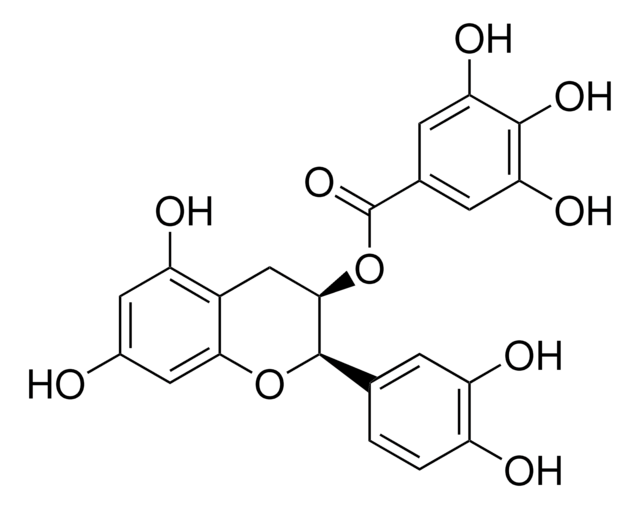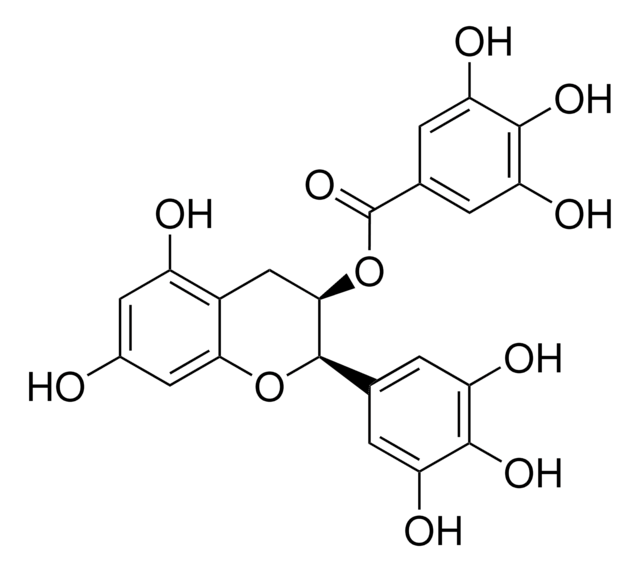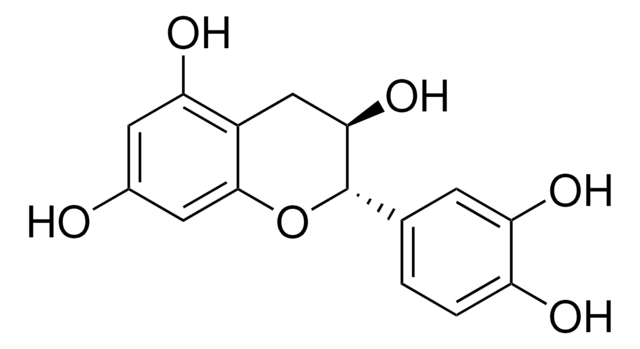E1753
(−)-Epicatechin
≥90% (HPLC)
Synonym(s):
(−)-cis-3,3′,4′,5,7-Pentahydroxyflavane, (2R,3R)-2-(3,4-Dihydroxyphenyl)-3,4-dihydro-1(2H)-benzopyran-3,5,7-triol
About This Item
Recommended Products
Quality Level
Assay
≥90% (HPLC)
form
powder
mp
240 °C (dec.) (lit.)
application(s)
metabolomics
vitamins, nutraceuticals, and natural products
SMILES string
O[C@@H]1Cc2c(O)cc(O)cc2O[C@@H]1c3ccc(O)c(O)c3
InChI
1S/C15H14O6/c16-8-4-11(18)9-6-13(20)15(21-14(9)5-8)7-1-2-10(17)12(19)3-7/h1-5,13,15-20H,6H2/t13-,15-/m1/s1
InChI key
PFTAWBLQPZVEMU-UKRRQHHQSA-N
Gene Information
human ... BACE1(23621) , CYP1A2(1544)
Looking for similar products? Visit Product Comparison Guide
General description
Application
- as an antioxidant to downregulate nicotinamide adenine dinucleotide phosphate hydrogen (NADPH) oxidase and improve insulin sensitivity in in vivo (high fat-fed mice) and in vitro (HepG2 cells) studies
- to study its effect on blood pressure, nitric oxide synthase (NOS) activity and anxiety-like behavior on borderline hypertensive rat (BHR) models
- to test its effect on neuronal survival in the hippocampus of middle-aged rats on swimming training, under oxidative stress
- to study its antioxidant activity in dark chocolate
- as a characteristic compound in polyphenols analysis
Biochem/physiol Actions
Signal Word
Warning
Hazard Statements
Precautionary Statements
Hazard Classifications
Eye Irrit. 2 - Skin Irrit. 2 - STOT SE 3
Target Organs
Respiratory system
Storage Class Code
11 - Combustible Solids
WGK
WGK 3
Flash Point(F)
Not applicable
Flash Point(C)
Not applicable
Personal Protective Equipment
Certificates of Analysis (COA)
Search for Certificates of Analysis (COA) by entering the products Lot/Batch Number. Lot and Batch Numbers can be found on a product’s label following the words ‘Lot’ or ‘Batch’.
Already Own This Product?
Find documentation for the products that you have recently purchased in the Document Library.
Customers Also Viewed
Articles
Antioxidants protect biological systems from oxidative damage produced by oxygen-containing free radicals and from redoxactive transition metal ions such as iron, copper, and cadmium.
Our team of scientists has experience in all areas of research including Life Science, Material Science, Chemical Synthesis, Chromatography, Analytical and many others.
Contact Technical Service